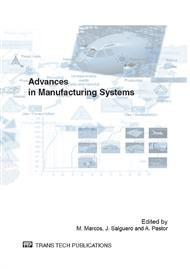p.31
p.37
p.43
p.49
p.55
p.63
p.69
p.73
p.79
Energy Requirements in Manufacturing: Lifecycle and Tribology Considerations
Abstract:
Energy sources, in the form of coal, oil, natural gas, solar or nuclear power, are global commodities, and as demand is projected to rise in the coming decades, so will costs. As such, an understanding of the energy needs of manufacturing processes and the ability to reduce the energy and carbon footprints are essential for sustainability reasons. This paper examines the global sources of energy, since the source used has a large effect on the cost and environmental impact of energy. Energy source effects are quantified in a number of measures. The theoretical approaches used to obtain a carbon footprint are explained and their shortcomining identified. Models of energy needs by manufacturing process are then examined, along with models incorporating the use of ancillary equipment such as pumps, filters, blowers, lighting, etc. Finally, the successful application of tribological principles to influence energy consumption is discussed.
Info:
Periodical:
Pages:
55-62
Citation:
Online since:
February 2012
Authors:
Keywords:
Price:
Сopyright:
© 2012 Trans Tech Publications Ltd. All Rights Reserved
Share:
Citation:


